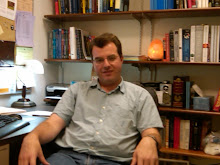In Chapter 7 Bala makes three main points:
1) Copernicus' work relied on trigonometric advances made by Indian mathematical astronomers and carried back to Europe by Jesuits who had done missionary work in India. I think he makes a good case here, though a lot of it relies on details of archaic mathematical techniques that I know little about. Modern algebraic and trigonometric notations make so many calculations so easy that it's often nearly impossible for somebody not trained as a historian of science to read even Isaac Newton's work, let alone the work of astronomers trained in the Ptolemaic tradition.
2) Copernicus rejected an ugly Ptolemaic concept called the "equant", something that I can't bother myself to deeply comprehend because (like everything else involving planets in the Ptolemaic model) it's such an ugly thing. Apparently the Arab astronomers loathed the equant because they saw the universe as a manifestation of God's perfect, pure divine will, and the equant was just freaking ugly. Certainly Copernicus must have read some of the Arab critics of the equant, but before we judge the magnitude of their influence on Copernicus I must say that I recall reading in Kuhn's Copernican Revolution a few years ago that European astronomers apparently spent several centuries trying to introduce some new concept that could simplify planetary motion. I take this to mean that everyone, not just the Arabs, was aware how ugly Ptolemy's model of planetary motion was. A longing for a simpler, unifying model seems to be a universal personality trait among physical scientists.
3) While Bala doesn't claim a line of influence from India to Copernicus on this point, he notes that Indian astronomers had also tried heliocentric models, and had tried to answer the "OK, but if the earth is spinning so fast why don't we fly off?" objection by invoking physical models that involved the earth carrying us along. Their physics was hardly Galilean, but there are at least parallels in that they attempted to simplify the universe with a heliocentric model coupled to a theory of motion. Interesting stuff.
Subscribe to:
Post Comments (Atom)



No comments:
Post a Comment